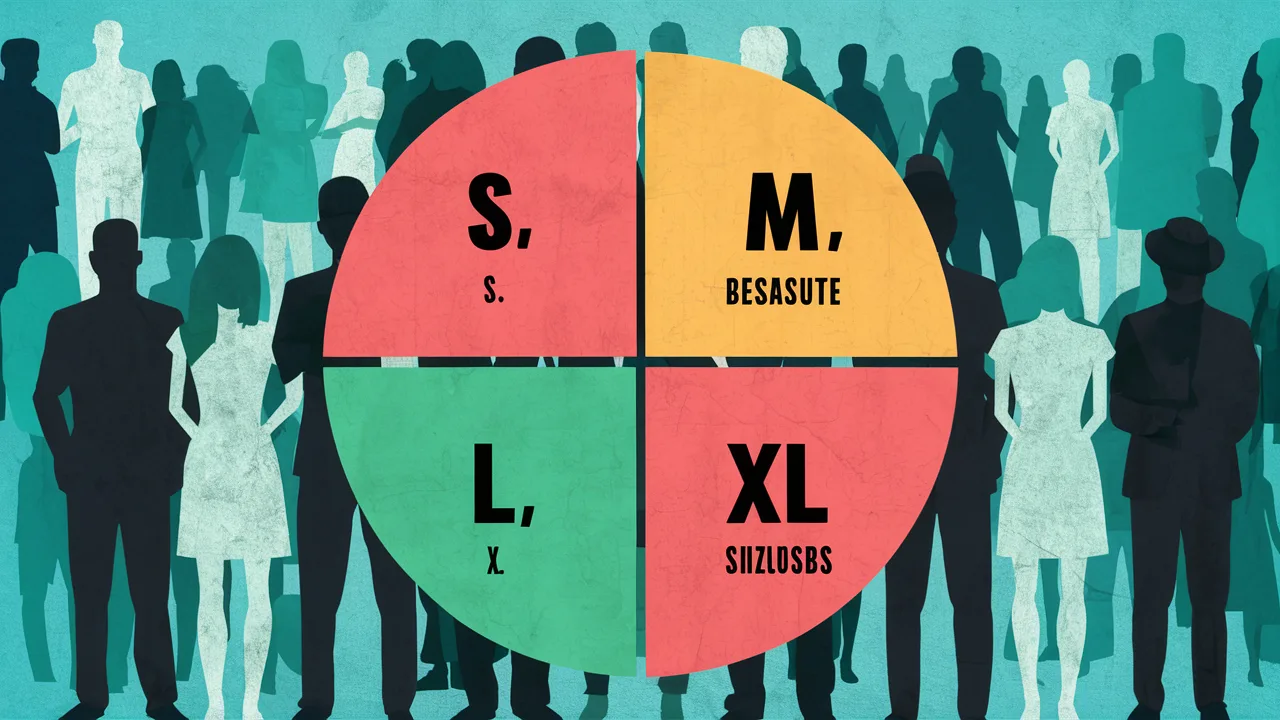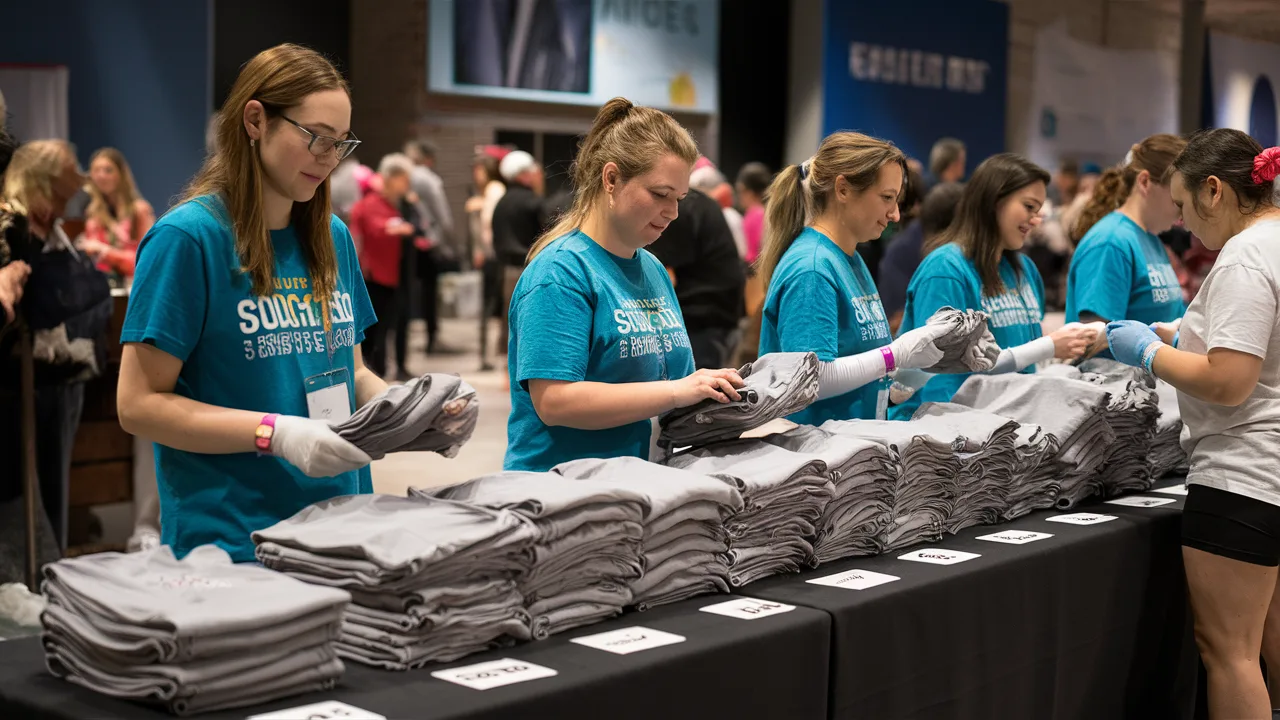How Many of Each Size T-Shirts Should I Order?
When you’re tasked with ordering t-shirt sizes for groups, it can feel overwhelming—especially when dealing with diverse body types, preferences, and ages. But here’s the good news: there’s a proven, data-backed approach to get it right every time. Using established size ratios and understanding your group’s demographics will save you time, money, and the headache of unhappy participants.
TL;DR Summary
- Start with proven ratios: The standard adult group t-shirt ordering follows a 1:2:2:1 ratio (S:M:L:XL).
- Survey when possible: Collect actual sizes if your group is under 100 people for maximum accuracy.
- Know your audience: Adjust size ratio for group shirts based on age, gender mix, or activity type.
- Order smart extras: Always plan for 5-10% surplus in popular sizes (usually M & L).
- Use visual aids: T-shirt size breakdown charts help refine your ordering strategy.
Establishing the Right Size Ratio
Ever ordered shirts only to watch the smalls pile up while the larges disappear instantly? That’s what happens when you don’t establish proper size ratios. Whether your group includes young adults, families, or corporate professionals, understanding your demographic composition is crucial for successful group t-shirt ordering.
Here’s our proven guideline based on extensive industry experience:
| Size | General Ratio (Adults) | Adjustment Notes |
|---|---|---|
| Small (S) | 12% | Include more if group skews younger or female |
| Medium (M) | 28% | Most popular size across genders |
| Large (L) | 32% | Safe to round up for extras |
| Extra Large (XL) | 20% | Essential for adult male-heavy groups |
| XXL+ | 8% | Optional unless specified by attendees |
This t-shirt size breakdown adjusts based on your group’s characteristics. For instance, a kids’ summer camp will lean heavily toward youth medium and large, while ordering shirts for events like corporate gatherings may require more large and XL sizes.
Understanding T-Shirt Size Breakdowns

Real-World Group Ordering Examples
Let’s make this practical. Imagine you’re handling group t-shirt ordering for a company family day with 200 participants. You don’t have time for individual measurements, and only 60% provided their sizes on RSVPs. What’s your strategy?
You combine survey data with proven size ratios. Here’s your actionable breakdown:
| Size | Estimated Count (200 shirts) |
|---|---|
| S | 25 |
| M | 56 |
| L | 64 |
| XL | 40 |
| XXL+ | 15 |
This approach minimizes waste while ensuring adequate coverage. If your group has more females, slightly increase sizes S and M. For active outdoor events like sports tournaments, people often prefer sizing up for comfort and movement.
Tips for Ordering Group T-Shirts
Successful group t-shirt ordering involves more than just getting the size ratio for group shirts right. Here are essential tips every event planner should follow:
- Always order extras: Account for spills, no-shows, or last-minute additions. Add 2 extra shirts per 50 participants in popular sizes.
- Keep cuts simple: Choose unisex sizing to maintain consistent calculations unless gender-specific fits are absolutely necessary.
- Survey fit preferences: Some groups prefer looser fits while others want tailored looks. A quick poll can inform your decision.
Best Practices for Events
When you’re ordering shirts for events, the stakes are high. You’re responsible for ensuring volunteers, guests, and attendees all look and feel great. Here are event-specific best practices:
- School Events: Kids grow fast—always round up their sizes. Youth medium and large are typically safe choices.
- Corporate Events: Focus on M, L, and XL as your primary sizes. Choose cotton-poly blends for versatile fit accommodation.
- Fitness or Marathon Events: Size up by one for comfort during physical activity and sweating.
- Charity Drives: Budget-conscious? Concentrate on standard cuts in bulk-friendly sizes like M and L for easy redistribution.
- Family Reunions: Consider name labels inside shirts, especially for children and elderly attendees to prevent mix-ups.
Ensuring a Perfect Fit

How to Measure Without Measuring
Ideally, you’d have exact sizes for everyone. But reality rarely cooperates. Here’s how to get close to perfect with your t-shirt size breakdown:
- Use RSVP Forms: Always include sizing options on any required participant forms.
- Provide sizing charts: Include visual guides in your invitations. People make better guesses with references.
- Host pre-order try-ons: For schools, clubs, or regular organizations, offering sample shirts for fitting dramatically improves accuracy.
- Leverage historical data: If you’ve done this before, use previous order data to guide current decisions.
Expert Recommendations for Shirt Orders
Here are our final recommendations based on years of successful group t-shirt ordering:
- Use the proven 1:2:2:1 ratio unless you have compelling data suggesting otherwise
- Let volunteers choose first from unclaimed exact sizes to boost morale
- Pre-sort and label everything for seamless distribution using zip-lock bags and printed labels
Cost Guide: Shirt Pricing in Singapore
| Category | Price Range (Per Shirt) |
|---|---|
| Entry-Level Bulk Cotton | $6 – $10 |
| Mid-Range Poly-Cotton Blend | $11 – $17 |
| Premium Print or Custom Cuts | $18 – $30+ |
Frequently Asked Questions
How many of each size T-shirts should I order?
Start with a 1:2:2:1 ratio (S:M:L:XL) and adjust according to your group’s demographic. Order 5-10% extras in common sizes.
What if I don’t have everyone’s size in advance?
Use general size ratios based on demographics. For mixed adult groups, prioritize M and L, and order surplus for flexibility.
How do I handle shirt sizes for kids?
Go by age brackets and round up. Youth M and L typically suit most school-age children.
Should I offer both unisex and fitted styles?
Only if your group is large enough to justify the complexity. Otherwise, stick to universal/unisex fits for efficiency.
Is it better to overshoot or undershoot on sizes?
Overshoot slightly in mid-range sizes (M and L). Undershooting risks unhappy attendees.
What about sizes above XL?
Only include XXL+ if specifically requested or known from prior orders. Don’t overbuy unless you’re sure they’ll be used.
Are sizing charts accurate?
Mostly, yes—but always add production tolerance of +/- 1 inch. Sharing visuals of actual samples improves fit accuracy.
